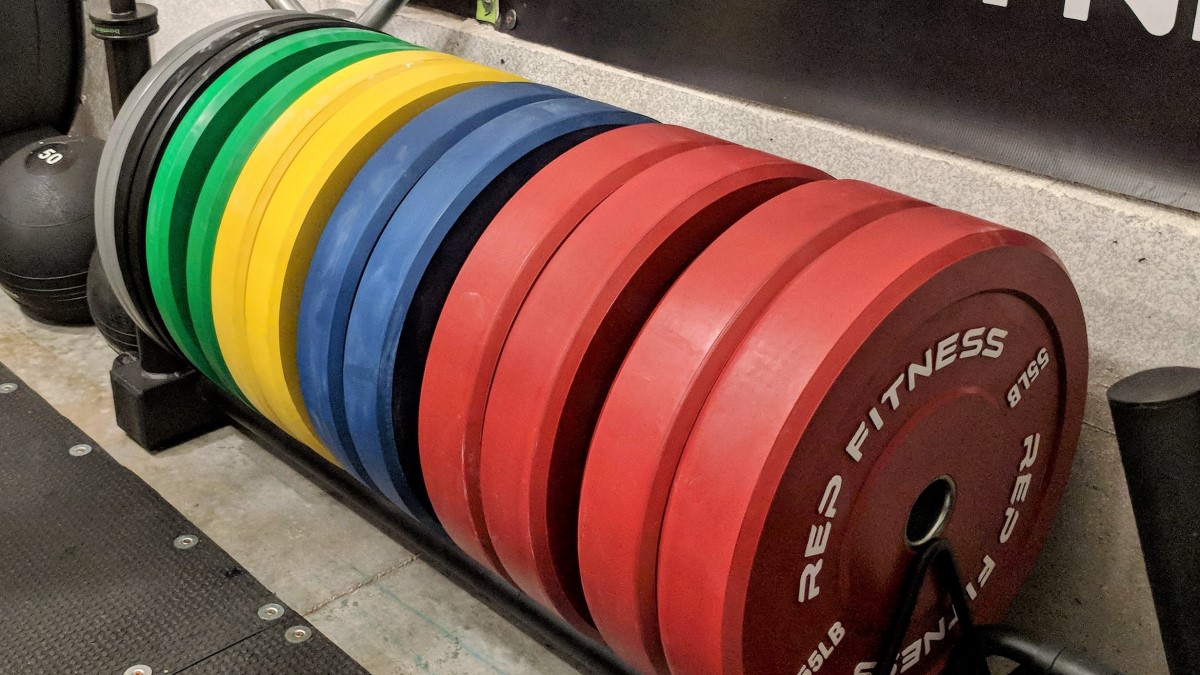Table of Contents
What Are Bumper Plates?
Bumper plates are solid rubber plates with an iron hub in the center to shape and protect the center hole. They are made for dropping from as high as overhead, for the clean-and-jerk and snatch, the two olympic lifts done at at weightlifting competitions, the Olympic Games and Crossfit Games.
These are NOT rubber coated plates, which are made mostly of cast iron and are merely coated on the outside with rubber to protect them, cut noise, and protect any equipment they are leaned up against.
The rubber that these plates are made with is very dense, ie: a high shore durometer rating, which for bumper plates we measure on the shore A scale. Not like car tires, which are comparatively soft. These generally have a dead-blow bounce, just enough to provide a little bit of cushion but only bounce an inch or so, depending on the flooring. Some bumper plates like the recycled rubber Hi Temps are actually bouncy because they are so soft, and they will go way up in the air.
Olympic Lifts – Do I Need Bumper Plates?
Generally, you should be using bumper plates when doing olympic lifts – the snatch and the clean-and-jerk – to prolong the life of everything, including the plates, bar, and floor.
If you’re doing cleans, without the jerk, you can usually get away with using iron plates if you don’t do max attempts and keep the weight manageable. You will be lowering the weight down in a controlled manner each rep.
The exception would be if you’re using relatively light weight (whatever “light” is for you) to the point where you are in control of every rep and lower the weight to the floor without dropping it.
Deadlifts – Are Bumper Plates Necessary?
Deadlifts are less extreme in the distance they will be dropped. A deadlift involves bringing the bar only as high as around your upper thigh as you stand up all the way straight.
If you’ll be letting go of the bar at the top instead of lowering it down, you might think about bumper plates. If you have rubber flooring, you might be ok. If you’re lifting 500 lbs, maybe not. So there is no hard and fast rule here.
At IPF (International Powerlifting Federation) meets they use steel powerlifting discs, which are calibrated to tight tolerances within 10 grams. Steel is stronger than iron, but the point is that they don’t usually use bumper plates in these competitions.
One issue with using bumpers for deadlifts is you’ll have trouble loading more than about 405 lbs (4 45lb plates per side), due to the thickness of the rubber. You can get a lot more on there with competition bumpers, which are partially steel and are more expensive. If you’re not planning on ever reaching that level where you need to fit more weight, normal bumper plates are fine for deadlifts.
To save on cost, it’s perfectly fine in many situations to use iron plates. They’re still pretty strong.
See our article on whether you need bumpers for deadlifts.
If your deadlift is above 315lb or so (three 45lb bumpers each side), another factor starts to become significant: the bar can flex more before the last plates clear the floor, because more weight is distributed to the outside.

